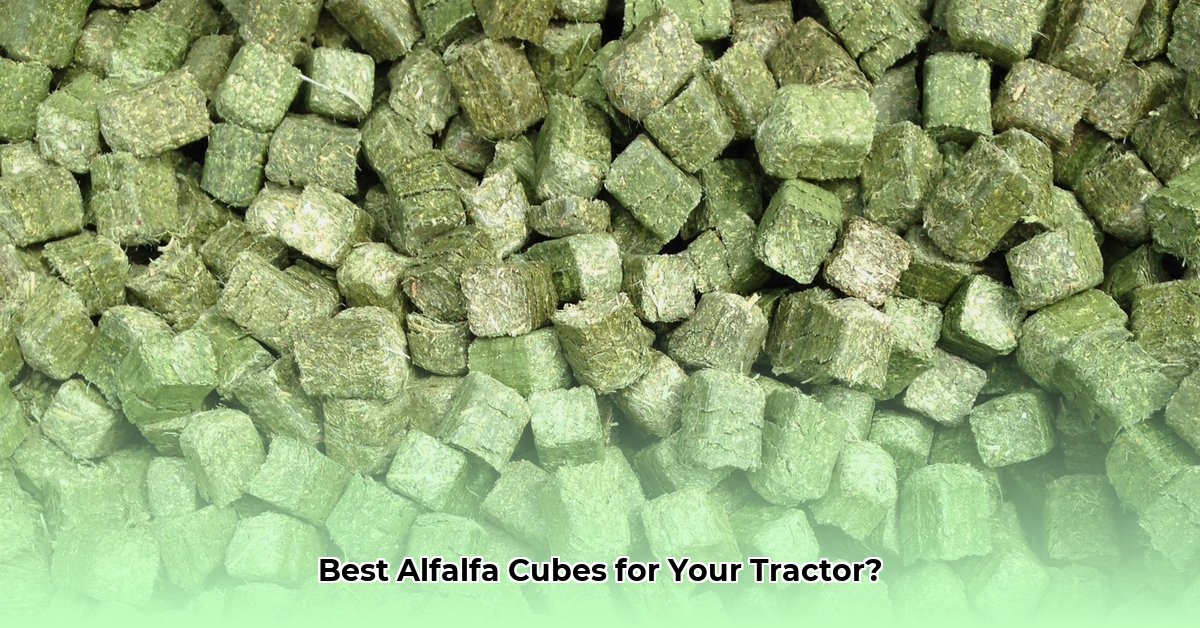
Understanding Your Options: Dumor and Standlee Alfalfa Cubes
Choosing the right alfalfa cubes for your livestock is crucial for their health and performance. Tractor Supply offers several brands, but two stand out: Dumor and Standlee. This comparative review aims to help you make an informed decision, though complete data is currently limited. We'll examine available information, highlight data gaps, and offer strategies to gather the missing details you need.
Dumor Premium Alfalfa Cubes: A Closer Look
Dumor offers 50-pound bags of alfalfa cubes, known for consistent quality and widespread availability at Tractor Supply. However, detailed nutritional information is scarce. While the packaging may provide some partial nutritional information, comprehensive data on protein, fiber, and mineral content isn't readily accessible online. This makes a direct, data-driven comparison with Standlee challenging. This lack of easily available data underscores the need for greater transparency from manufacturers.
Standlee Premium Western Forage Alfalfa Cubes: A Comparative Analysis
Standlee's alfalfa cubes come in 40-pound bags. Like Dumor, detailed nutritional information is limited. The smaller bag size immediately raises a critical question: does the larger Dumor bag offer better value per pound, or is Standlee more cost-effective despite its smaller packaging? Without comprehensive pricing and nutritional data, this remains uncertain.
Addressing the Data Gap: What We Don’t Know (Yet)
The most significant hurdle in a thorough comparison of Dumor and Standlee is the lack of readily available, detailed nutritional information. Both brands fall short in providing readily accessible data on their websites or product packaging. This lack of transparency makes a precise, scientific comparison impossible at this time.
Beyond the Numbers: Other Key Factors
Nutritional information is paramount, but several other factors influence the best alfalfa cube choice:
Animal-Specific Needs: Different livestock have differing nutritional requirements. Horses, cows, and sheep, for instance, have contrasting dietary needs based on their size, age, and activity level. Always consult with a veterinarian or animal nutritionist to determine the optimal nutritional profile for your specific animals.
Cost per Pound: Comparing the price per pound is crucial for determining value. Consider the weight of the bag along with its overall price. Do not simply focus on the total cost of a single bag; instead, calculate the price per pound to make a fair comparison between Dumor and Standlee, as the bag sizes differ.
Regional Availability: Shipping and transportation costs can significantly impact the final cost. Prioritize brands easily accessible in your area to minimize expenses.
Sustainability: If sustainability is important to you, research each brand's farming practices. While this type of data may not be readily available, inquire directly with the manufacturer or look for certifications on the packaging that showcase sustainable farming practices.
How to Find the Missing Pieces: A Step-by-Step Guide
Check Product Packaging: The product label itself might contain some key nutritional information, though potentially incomplete.
Contact Manufacturers Directly: Dumor and Standlee's customer service departments can potentially provide more comprehensive nutritional data sheets.
Compare Prices Across Retailers: Check prices at other feed stores and compare them with Tractor Supply's prices, to ensure that you are getting the best deal possible.
Recommendations and Conclusion
Until more comprehensive data is released, selecting between Dumor and Standlee alfalfa cubes requires a careful evaluation of the available information, coupled with considering the specific nutritional needs of your animals, cost-effectiveness, and convenience. Prioritize accessing complete nutritional data and assessing pricing per pound to optimize your purchase decision. The need for greater transparency from manufacturers can not be overstated. We hope for improved data availability in the future, making informed feed decisions easier for livestock owners.